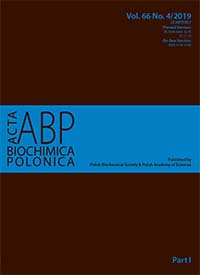Defective apoptosis of U937 cells induced by benzyl isothiocyanate (BITC)
Abstract
Isothiocyanates precursors (ITCs), including benzyl isothiocyanate (BITC), are considered as cancer chemopreventive agents. ITC derivatives were tested in clinical trials (NCT00005883, NCT01265953, NCT01790204) and preclinical studies aimed to inhibit tumor growth and modulation of their microenvironment. Although efficacy of ITCs was demonstrated with several leukemic cell lines, the final steps of BITC-induced apoptosis were not completely elucidated in the literature. Therefore, we focused on morphological and biochemical events occurring upon treatment of U937 leukemia cells with BITC. Micromolar concentrations of BITC induced cytotoxicity in U937 cells, with major features resembling the hallmarks of apoptosis: phosphatidylserine exposure, low mitochondrial membrane potential, and presence of PARP cleavage by caspases. Disassembly to apoptotic bodies, a final step of classic apoptosis, was not observed. While tracing the signalling pathways, our results showed increased levels of BAG-1 and PUMA proteins, but in contrast to other models of ITCs-induced apoptosis, downregulation of Mcl-1 protein was not noticed. Additionally, BITC–induced dying U937 cells released lower levels of chemoattractants, such as IL-8 and MCP-1, when compared to cells undergoing classical apoptosis. This may disrupt clearance of cell debris by macrophages in vivo (efferocytosis), and in turn affect the inflammatory response. In summary, BITC inhibits tumor growth which makes it a good candidate for supporting cancer treatment. However, atypical apoptosis of leukemic U937 cells induced with BITC may affect the ability of phagocytes to effectively scavenge cellular debris, which poses a question of BITC effectiveness as a chemopreventive agent for leukemias.
Acta Biochimica Polonica is an OpenAccess quarterly and publishes four issues a year. All contents are distributed under the Creative Commons Attribution-ShareAlike 4.0 International (CC BY 4.0) license. Everybody may use the content following terms: Attribution — You must give appropriate credit, provide a link to the license, and indicate if changes were made. You may do so in any reasonable manner, but not in any way that suggests the licensor endorses you or your use.
Copyright for all published papers © stays with the authors.
Copyright for the journal: © Polish Biochemical Society.


